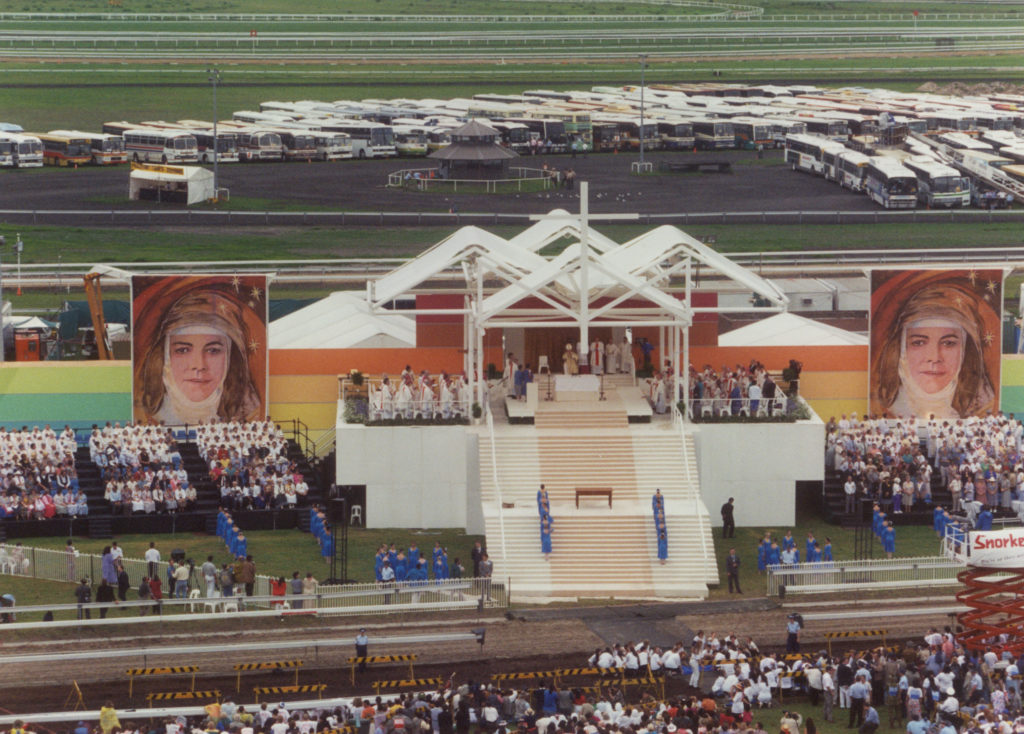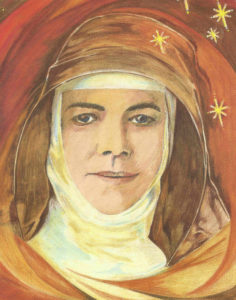
Srs Clare Koch and Margaret McKenna reflect back on the time since the Beatification of Mary MacKillop.

Mary MacKillop received the title ‘Venerable’ from the Catholic Church on 13 June 1992. This was a recognition of an Australian who had practised the Christian virtues in a heroic manner. If a specialist panel of medical experts verified that there was no medical explanation for what was claimed to be a miraculous cure through her intercession with God, Sr Mary of the Cross MacKillop, the cofounder of the Sisters of Saint Joseph of the Sacred Heart, would be given the title ‘Blessed’ at a public church ceremony – a Beatification. Such an event, unique for Australia, would lay significant foundations for who we are as a people. We were being faced with someone of our own who was being named and honoured as a future Saint. The Sisters of St Joseph decided that this was a celebration to be shared with all Australians irrespective of class or religious belief.
The Josephite leadership, although uncertain that a ceremony of Beatification would eventuate, decided to prepare. Two Josephites were appointed to a Mary MacKillop Secretariat whose task was to present Mary MacKillop as an Australian, relevant to all walks of life and layers of society. By February 1993, the project was underway. The strategy was to seek the involvement and expertise of the public, through specialised committees, involving representatives across the spectrum of society, the political, secular and religious sectors.
During the next two years the life and person of Mary MacKillop was presented through books, radio and television interviews, other articles in print media, drama, cinema, art and musical compositions. Musicians were invited to compose hymns, honouring Mary MacKillop, suitable for church ceremonies. An ‘Historical Toile’ – ‘The MacKillop Toile’ – was produced to join the two Australian toiles, ‘The Philip Toile’ and the
’Macquarie Toile’. This Australian cotton product illustrated with scenes from Mary MacKillop’s life was presented as furnishing for the home. Art is considered a universal language so a ‘Mary MacKillop Art Award’ was organised with the support and help of a committee of experts. A selection of the paintings was on exhibition in Sydney, Melbourne and Adelaide.
Early in 1994 information from Rome indicated that Mary MacKillop was likely to be beatified and that the ceremony was to be in St Peter’s Basilica in Rome. ‘Why not in Australia?’ Cardinal Clancy was approached and agreed to request that Sydney be the venue for the ceremony. Some weeks later an official announcement stated that Pope John Paul II would be visiting Australia towards the end of 1994. It was decided that the date of the ceremony of Beatification was to be celebrated on 19 January 1995.
This was welcome news but added a new dimension to the agenda of the Mary MacKillop Secretariat. The focus had widened from preparing for the beatification of Mary MacKillop to preparing also for a Papal Visit to Australia. The actual ceremony of Beatification became the responsibility of the Archdiocese of Sydney and the Josephite Secretariat joined in the organisation of allied public events such as the official welcome to the Pope, the ceremony of Morning Prayer and other celebrations. A primary issue was to find suitable venues capable of hosting large crowds. After discussion and enquiries, the Sydney Domain was hired for the official welcome to the Pope, and the racing fraternity agreed to the Randwick Racecourse being the venue for the Church ceremony of Beatification. An evening of entertainment was organised to accompany the welcome to the Pope and care was taken to maximise participation in the church ceremony of Beatification.
At this ceremony Pope John Paul II assured the congregation that ‘…the holiness demanded by the Gospel is as Australian as (Mary MacKillop) is Australian’. Truly a reason to celebrate!
Contributed by the Mary MacKillop Secretariat
Srs Clare Koch and Margaret McKenna
